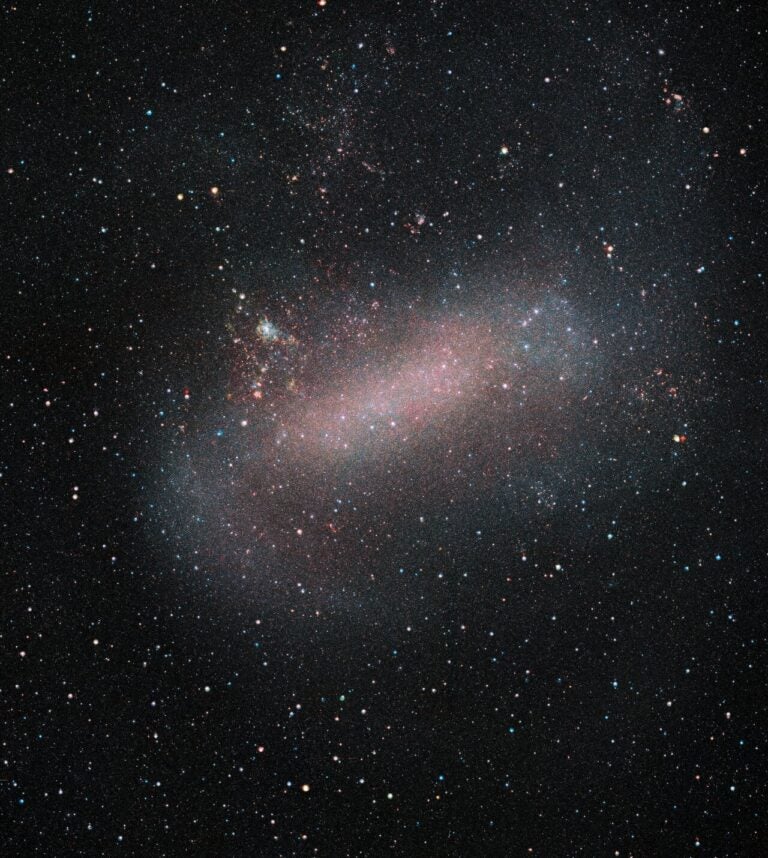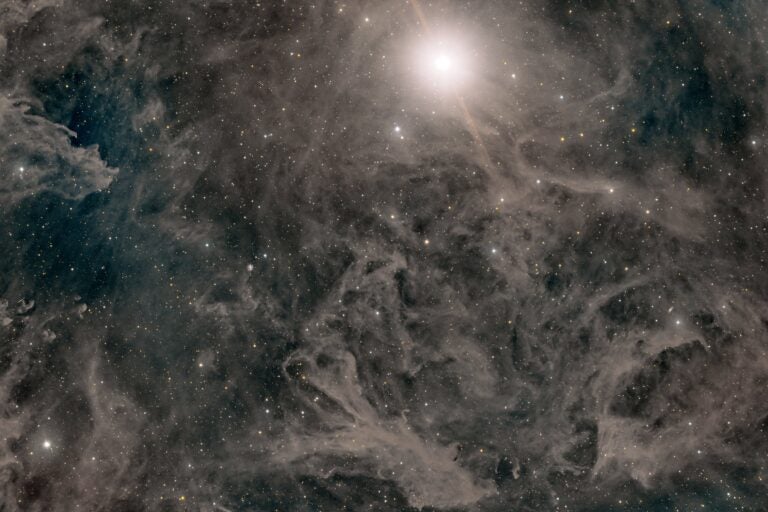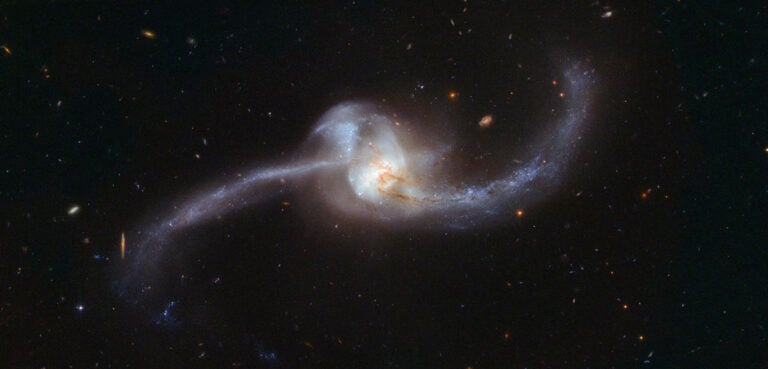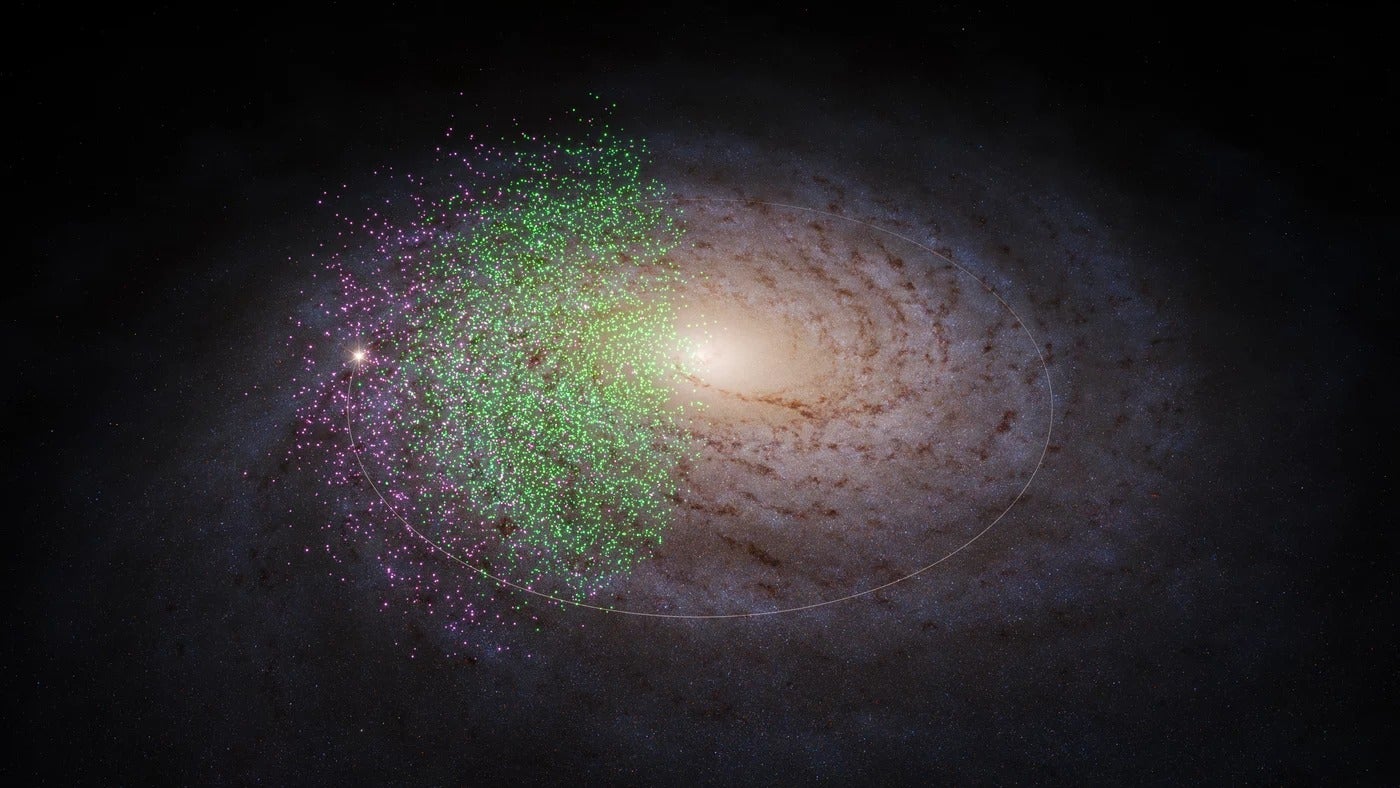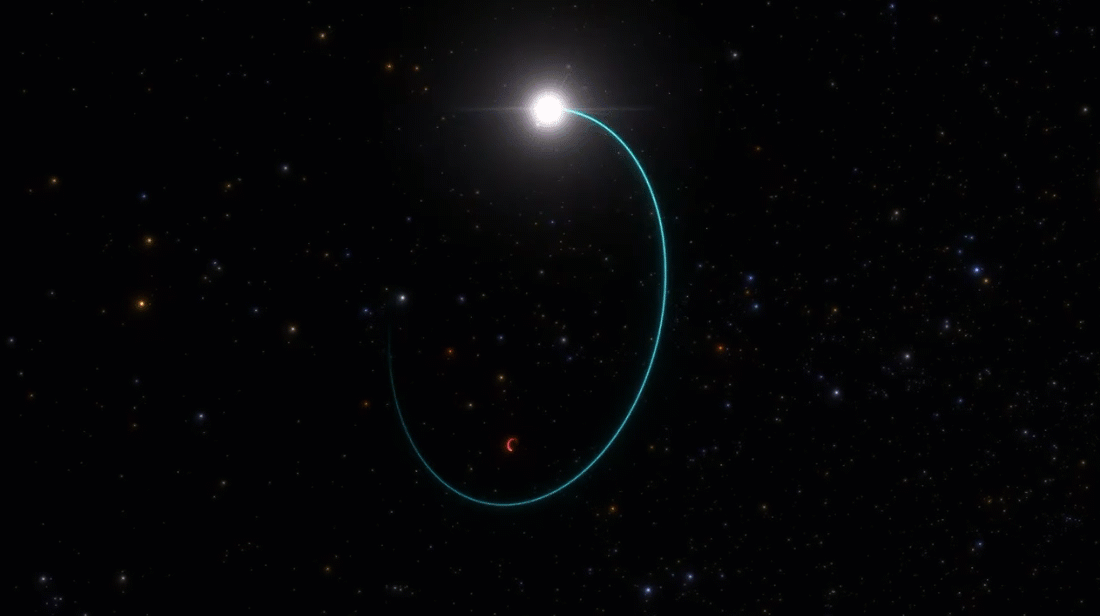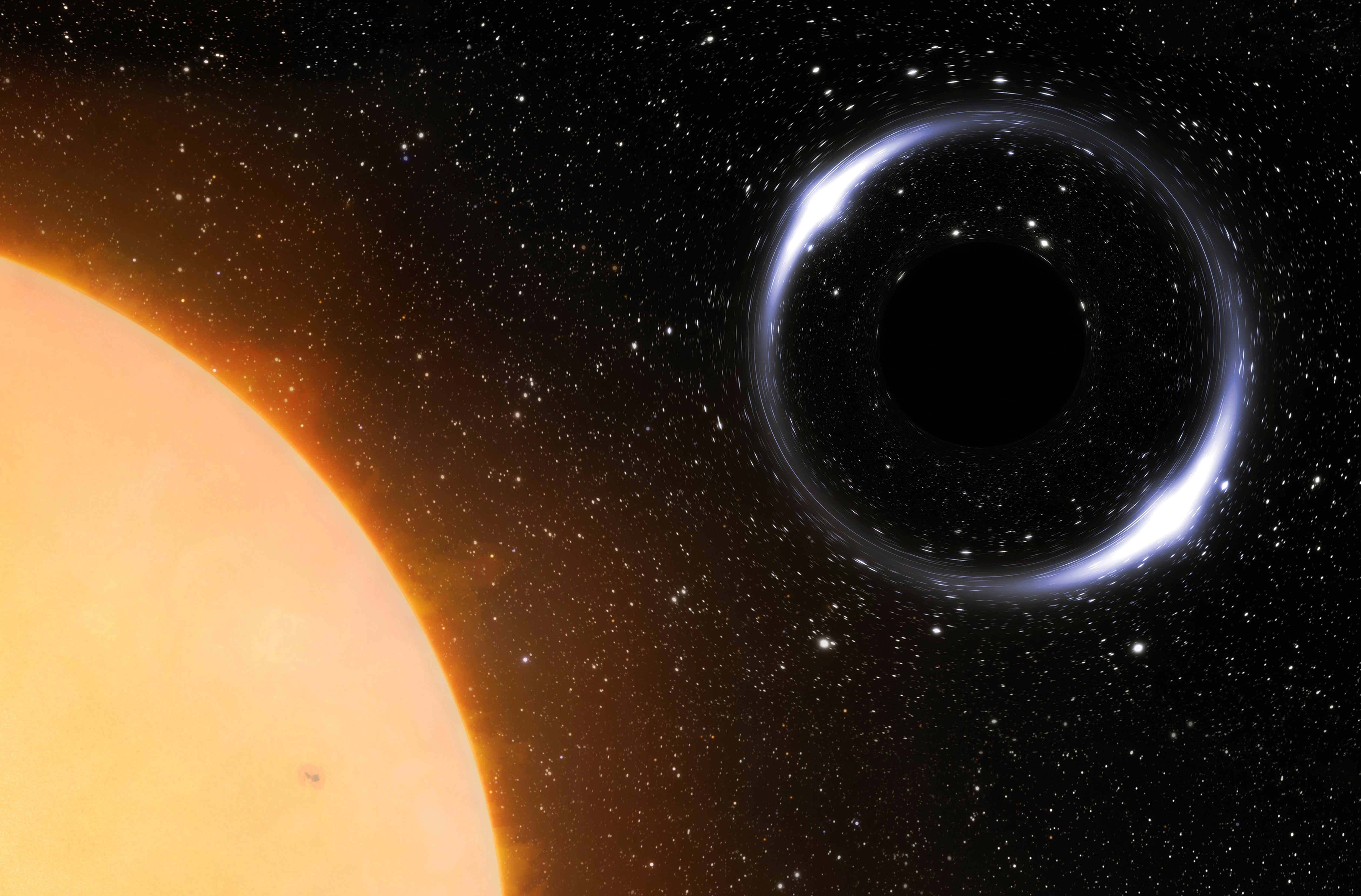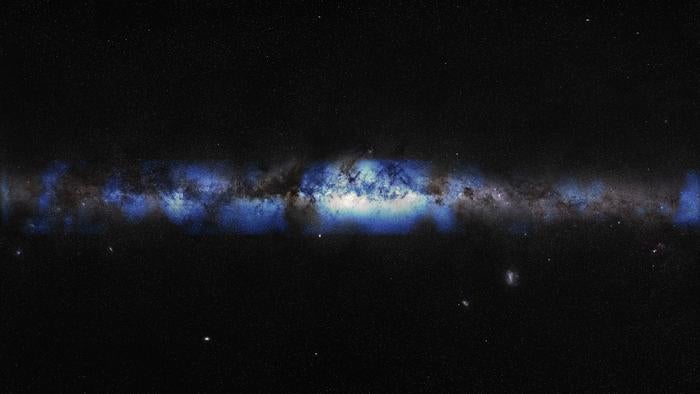
In the vast expanse of space, neutrinos travel in silence, rarely interacting with the countless particles that litter its path. A few of these many billions of ghostly particles meet their end in a dim flash of light, illuminating an ice cube the size of an arena at the South Pole.
Filled with well-placed detectors and fittingly named the IceCube Neutrino Observatory, this array has now allowed astronomers to image the Milky Way — not using light, but particles. The resulting image, a first, was published June 29 in Science.
Seeing in neutrinos
Naoko Kurahashi Neilson, a particle physicist at Drexel University in Philadelphia, has been working at IceCube for more than 10 years. Operating in Antarctica, IceCube is a collaboration of hundreds of scientists from 50 institutions and 14 countries. And unlike the prevalent telescopes that you might be familiar with, which use light (photons) to see the universe, IceCube uses a different kind of particle: the neutrino.
Neilson and her team have now reconstructed the Milky Way Galaxy using IceCube data from the past decade. “This is the first time we are viewing our galaxy in something other than light,” she says.
Photons and neutrinos are both fundamental particles. “When you see the night sky with your own eyes, photons are coming from every star, all the way across space, after traveling millions of miles, to hit your eyeballs, and that’s where they terminate. It is how you know there’s a star there,” Neilson says. Most telescopes work the same way, only they can see fainter objects than the human eye.
And with IceCube, Neilson says, “we do the same thing with neutrinos.”
Observing with neutrinos holds massive benefits. The dust that permeates galaxies and shrouds black holes scatters so many photons that standard telescopes cannot see beyond it. Neutrinos, due to their noninteractive nature, enable us to pierce through the dust and observe galaxies or celestial bodies we are otherwise unable to see. “If the telescope produces a picture of the universe, the neutrino observatory produces an X-ray,” says Christina Love, also an IceCube collaborator at Drexel University.
Astronomy on ice
But neutrinos are difficult to detect since they rarely interact with matter. IceCube tackles this by literally using a giant cube of ice. “And what place is better for such a thing than Antarctica?” Neilson says. The telescope collects most of its data during the polar winter, when planes don’t land or take off. About 40 scientists and staff are left at the base, which is wholly isolated, for five months a year. “You don’t see another soul or even the Sun!” Neilson says.
“When you are in Antarctica, you are standing on 2 miles [3 kilometers] of ice,” she explains. “We drilled detectors into the bottom third of this ice, where it is pitch black.” Due to the dense nature of ice, high-energy neutrinos from space strike the nucleus of atoms in the ice and break down into an array of highly energetic particles that radiate light. The detectors then easily capture this light in an otherwise utterly dark domain. A machine learning algorithm reconstructs where the neutrino came from in space using information such as which detectors light up, when they do so, and the intensity of the light. With this, researchers are trying to map the universe.
A new view
Since IceCube’s establishment in 2011, the observatory has recorded over a million neutrinos. Surprisingly, none of the neutrinos astronomers previously identified had originated in the Milky Way. This is because of the way the observations were made. When a neutrino passes through the detector, it leaves a linear, tracklike path of light, which is used to determine where the neutrino originated. But neutrinos that leave this signature belong to objects far away, outside our galaxy.
Neilson had the idea to look for a different kind of neutrino signal, a cascadelike “blob” of light. These signals make it hard to pinpoint exactly where the neutrino came from and so were generally ignored in previous identifications of cosmic neutrinos. Analyzing these bloblike neutrino paths was like searching for a needle in a haystack, and the team wasn’t sure they’d find significant results.
But, the new search revealed hundreds of neutrinos that appear to come from the plane of the Milky Way. Turned into an image, it shows the areas of our galaxy that are producing high-energy neutrinos.
What’s more, the resulting image closely corresponds with gamma-ray images of the galaxy. This is significant because of how astronomers believe such galactic neutrinos are produced. When cosmic rays — fast-moving atomic nuclei generated in high-energy or cataclysmic objects — strike gas and dust in the galaxy, they should produce both gamma rays and neutrinos. Astronomers had already seen gamma rays they thought were created this way — now, the neutrinos that should also result have been spotted.
With the anticipated upgrades in the detector technology in the coming years and the further development of the machine learning algorithm, this image will only grow clearer. This should allow us to explore hidden features of our galaxy that we have never observed before.
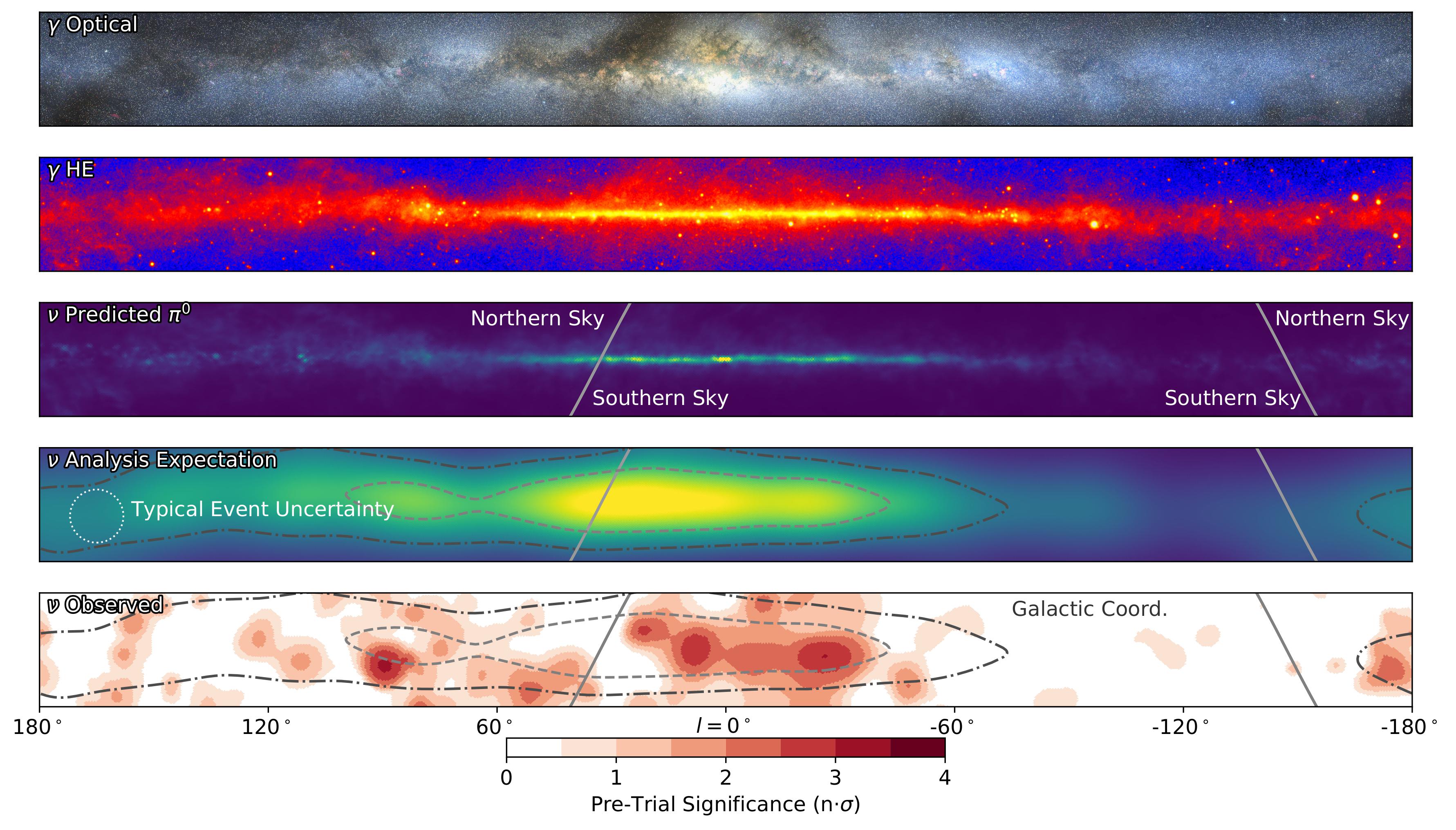
Neilson is thrilled with her team’s discovery and can’t wait to see more. In the 1980s, a supernova explosion in a satellite galaxy of the Milky Way heralded the first time physicists detected neutrinos from space. But their detectors weren’t very good. And we haven’t seen another neutrino event like that since. “We haven’t had another close-by supernova since the building of IceCube,” Neilson says, “We are all waiting to see one. Nature needs to cooperate and do its thing.”
Until then, IceCube will be waiting beneath the ice. “Hopefully, in another 10 years, I can come back with a NASA-quality picture of the entire universe, not in light, but in neutrinos. This is the goal of my career,” Neilson says.



